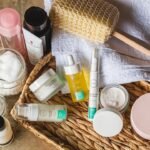The teenage years are a period of significant transformation, particularly for girls, as they navigate the complex landscape of puberty. During this time, the body undergoes a series of hormonal changes that are primarily driven by the increase in sex hormones such as estrogen and progesterone. These hormones play a crucial role in the development of secondary sexual characteristics, including breast development, the onset of menstruation, and changes in body composition.
The fluctuations in hormone levels can lead to a variety of physical and emotional changes, which can be both exciting and challenging. Understanding these hormonal shifts is essential for teenage girls as they learn to adapt to their evolving bodies and the accompanying emotional landscape. Moreover, the impact of these hormonal changes extends beyond physical development; they can also influence mood and behavior.
Many girls experience heightened emotions, mood swings, and increased sensitivity during this time, which can be attributed to the interplay between hormones and brain chemistry. This emotional turbulence can sometimes exacerbate the physical changes occurring in their skin, leading to issues such as acne and increased oiliness. Recognizing that these changes are a normal part of growing up can help teenage girls approach their experiences with greater understanding and resilience.
By fostering an awareness of how hormones affect their bodies and emotions, they can better navigate the challenges of adolescence while developing a positive self-image.
Key Takeaways
- Hormonal changes in teenage girls can lead to increased oil production, which can result in acne and breakouts.
- Common skin issues during puberty include acne, oily skin, and blackheads.
- A skincare routine for teenage girls should include gentle cleansing, exfoliation, and moisturizing.
- When choosing skincare products for teenage skin, look for non-comedogenic and oil-free options.
- Managing acne and breakouts involves using spot treatments, avoiding picking at the skin, and maintaining a healthy diet.
Common Skin Issues During Puberty
As teenage girls undergo hormonal changes, they often encounter a range of skin issues that can be both frustrating and distressing. One of the most prevalent concerns is acne, which affects a significant percentage of adolescents. The increase in androgen hormones during puberty stimulates the sebaceous glands in the skin, leading to an overproduction of sebum, or oil.
This excess oil can clog pores, creating an environment conducive to the growth of acne-causing bacteria. Consequently, girls may experience various forms of acne, including blackheads, whiteheads, and cystic lesions, which can vary in severity and location on the face and body. In addition to acne, other skin issues may arise during puberty, such as oily skin, enlarged pores, and uneven skin tone.
The hormonal fluctuations can also lead to increased sensitivity and irritation, making it essential for teenage girls to pay attention to their skin’s unique needs. Some may also experience conditions like eczema or psoriasis, which can flare up due to hormonal changes or stress. Understanding these common skin issues is vital for teenage girls as they learn to care for their skin effectively.
By recognizing that these challenges are a normal part of growing up, they can approach their skincare with patience and knowledge, ultimately fostering a healthier relationship with their appearance.
Developing a Skincare Routine for Teenage Girls
Creating a consistent skincare routine is essential for teenage girls as they navigate the challenges posed by hormonal changes and skin issues. A well-structured routine typically includes cleansing, toning, moisturizing, and sun protection. Cleansing is particularly important for removing excess oil, dirt, and makeup that can contribute to breakouts.
A gentle cleanser formulated for young skin can help maintain balance without stripping the skin of its natural moisture. Following cleansing with a toner can help refine pores and prepare the skin for subsequent products, while moisturizing ensures that the skin remains hydrated and healthy. In addition to these basic steps, incorporating targeted treatments can be beneficial for addressing specific concerns such as acne or uneven skin tone.
For instance, products containing salicylic acid or benzoyl peroxide can help combat breakouts by unclogging pores and reducing inflammation. However, it is crucial for teenage girls to avoid overloading their skin with too many products at once, as this can lead to irritation and exacerbate existing issues. Instead, they should focus on finding a routine that works for their unique skin type and concerns while allowing time for their skin to adjust to new products.
By establishing a consistent skincare regimen early on, teenage girls can cultivate healthy habits that will serve them well into adulthood.
Choosing the Right Skincare Products for Teenage Skin
Selecting appropriate skincare products is a critical aspect of maintaining healthy skin during the teenage years. Given the unique characteristics of adolescent skin—often oily or combination with a tendency toward breakouts—it’s essential to choose products that cater specifically to these needs. When shopping for cleansers, toners, moisturizers, and treatments, teenage girls should look for non-comedogenic formulations that won’t clog pores.
Ingredients like salicylic acid or tea tree oil can be particularly effective in managing acne-prone skin without causing excessive dryness or irritation. Additionally, it’s important to consider the formulation of moisturizers. Lightweight gel-based moisturizers are often ideal for oily or combination skin types since they provide hydration without adding extra oil.
For those with dry patches or sensitivity, cream-based moisturizers with soothing ingredients like aloe vera or hyaluronic acid may be more suitable. Furthermore, teenage girls should be cautious about using products with harsh chemicals or fragrances that could irritate their sensitive skin. By prioritizing gentle yet effective products tailored to their specific skin concerns, they can create a skincare routine that promotes clarity and balance while minimizing the risk of adverse reactions.
Tips for Managing Acne and Breakouts
Managing acne and breakouts effectively requires a combination of proper skincare practices and lifestyle adjustments. One of the most important tips for teenage girls is to avoid picking or squeezing blemishes, as this can lead to scarring and further inflammation. Instead, they should focus on using targeted treatments that contain active ingredients designed to combat acne without causing additional irritation.
Regular exfoliation—about once or twice a week—can also help remove dead skin cells that contribute to clogged pores; however, it’s essential to choose gentle exfoliants that won’t strip the skin of its natural oils. In addition to topical treatments, lifestyle factors play a significant role in managing acne. Maintaining a balanced diet rich in fruits, vegetables, whole grains, and lean proteins can support overall skin health.
Staying hydrated by drinking plenty of water is equally important, as it helps flush out toxins and keeps the skin looking plump and radiant. Furthermore, managing stress through activities like exercise or mindfulness practices can help reduce hormonal fluctuations that may trigger breakouts. By adopting these holistic approaches alongside a consistent skincare routine, teenage girls can take proactive steps toward achieving clearer skin.
Importance of Sun Protection for Teenage Skin
Sun protection is an often-overlooked aspect of skincare during adolescence; however, it is crucial for maintaining healthy skin both now and in the future. Teenage girls may not always recognize the long-term consequences of sun exposure, such as premature aging or an increased risk of skin cancer later in life. The delicate nature of adolescent skin makes it particularly susceptible to UV damage; therefore, incorporating sun protection into their daily routine is essential.
Broad-spectrum sunscreen with an SPF of at least 30 should be applied generously every day, even on cloudy days or when staying indoors near windows. In addition to sunscreen application, wearing protective clothing such as hats and sunglasses can further shield the skin from harmful UV rays. Seeking shade during peak sun hours—typically between 10 AM and 4 PM—can also help minimize exposure.
Educating teenage girls about the importance of sun protection not only empowers them to take care of their skin but also instills lifelong habits that promote overall health and well-being. By prioritizing sun safety during these formative years, they can significantly reduce their risk of developing serious skin issues in adulthood.
Incorporating Healthy Habits for Clear Skin
Beyond skincare routines and product choices, adopting healthy habits plays a vital role in achieving clear skin during adolescence. Regular physical activity is one such habit that benefits both physical health and skin appearance. Exercise increases blood circulation, which helps deliver oxygen and nutrients to the skin while promoting detoxification through sweat.
Engaging in activities like dancing, swimming, or team sports not only supports overall well-being but also contributes to a radiant complexion. Additionally, prioritizing sleep is crucial for maintaining healthy skin during the teenage years. Sleep deprivation can lead to increased stress levels and hormonal imbalances that may exacerbate acne and other skin issues.
Establishing a consistent sleep schedule that allows for 7-9 hours of quality rest each night can significantly improve both mood and skin health. Furthermore, practicing good hygiene by regularly washing pillowcases and avoiding touching the face can help prevent breakouts caused by bacteria transfer. By integrating these healthy habits into their daily lives, teenage girls can create a supportive environment for clear and vibrant skin.
Seeking Professional Help for Persistent Skin Issues
While many teenage girls may experience common skin issues during puberty that can often be managed with proper skincare routines and lifestyle adjustments, some may find themselves struggling with persistent or severe conditions that require professional intervention. Consulting with a dermatologist is an important step for those dealing with chronic acne or other dermatological concerns that do not respond to over-the-counter treatments. A dermatologist can provide personalized recommendations based on individual skin types and conditions while prescribing stronger medications if necessary.
In addition to medical treatments, dermatologists can offer valuable insights into effective skincare practices tailored specifically for teenagers facing unique challenges during puberty. They may recommend specialized treatments such as chemical peels or light therapy that target stubborn acne or scarring effectively. Seeking professional help not only addresses immediate concerns but also fosters a deeper understanding of skincare principles that will benefit teenage girls throughout their lives.
By taking proactive steps toward managing their skin health with expert guidance, they can build confidence in their appearance while navigating the complexities of adolescence with greater ease.









